Abstract
To standardize the procedure for isolating and culturing Lyme disease spirochetes, we modified the composition of the medium generally used for this purpose (BSK-II) and developed a system for its distribution. This medium contains no gelatin or agarose, and various components are used in proportions that differ from those in BSK-II. Each of the major proteinacious components was screened by substitution in samples of the complete product. The final medium was evaluated for the capacity to grow related spirochetes including Borrelia burgdorferi N40, Guilford, and JD-1 as well as strains of Borrelia hermsii (HS-1) and of Borrelia coriaceae (CO53). Each isolate developed from inocula containing as few as one to five organisms. Doubling time of B. burgdorferi during log-phase growth at 37 degrees C was 10 to 12 h. Lyme disease spirochetes were isolated in this medium from ear punch biopsies and dermal aspirates from naturally infected mice and rabbits, from dermal biopsies from a human patient, and by sampling field-collected deer ticks (Ixodes dammini). Cultured spirochetes remained infective to mice and to ticks. The medium can be stored at -20 degrees C or lower temperatures for at least 8 months without effect on its ability to support growth of small inocula to densities exceeding 10(8) spirochetes per ml. Lyme disease spirochetes remained infective to mice after being stored at -80 degrees C in this medium for at least 8 months. We anticipate that the availability of this standardized medium (Sigma Chemical Co.), supplemented with prescreened rabbit serum, will facilitate comparison of research results between laboratories and may eventually permit definitive clinical diagnosis of Lyme disease based on demonstration of the pathogen. The standardized medium is designated BSK-H.
Full text
PDF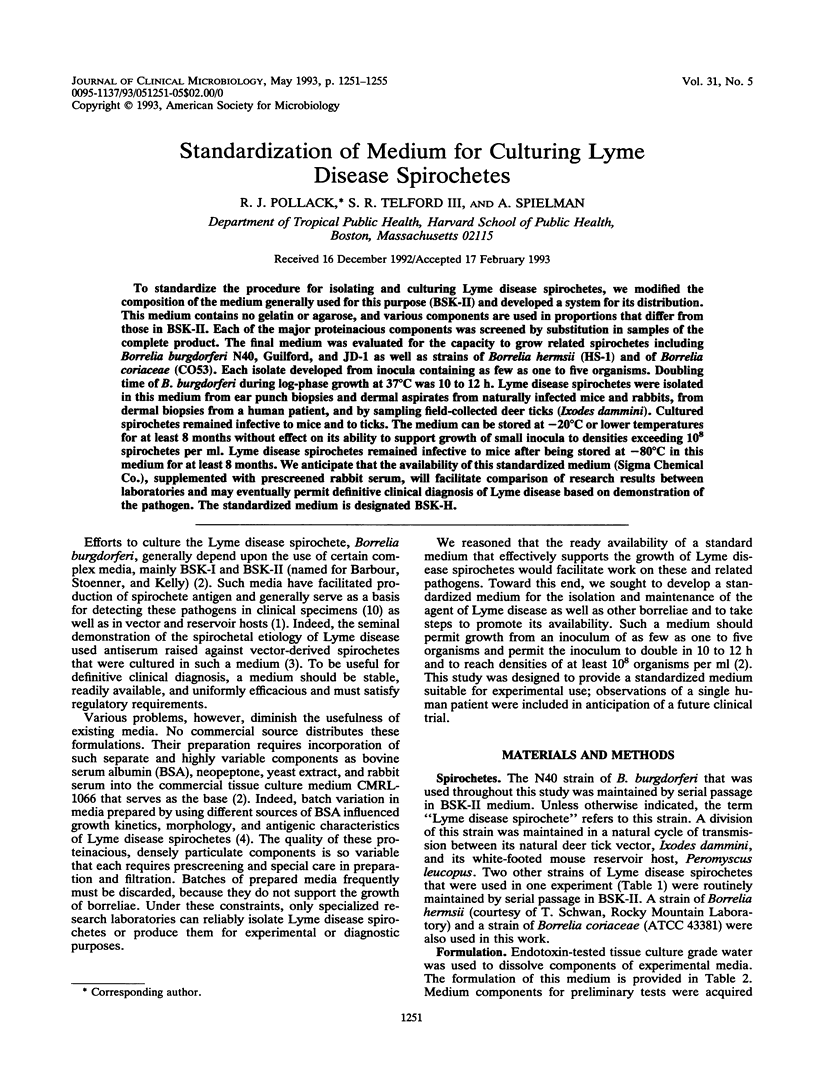
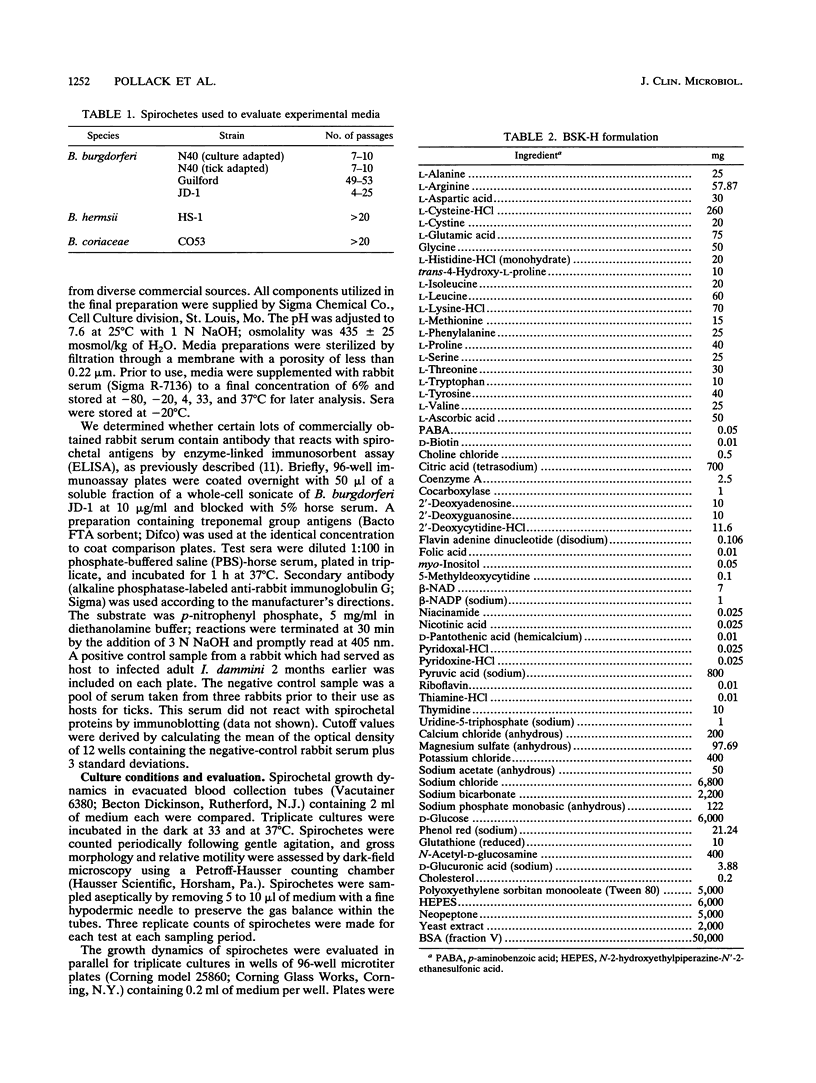
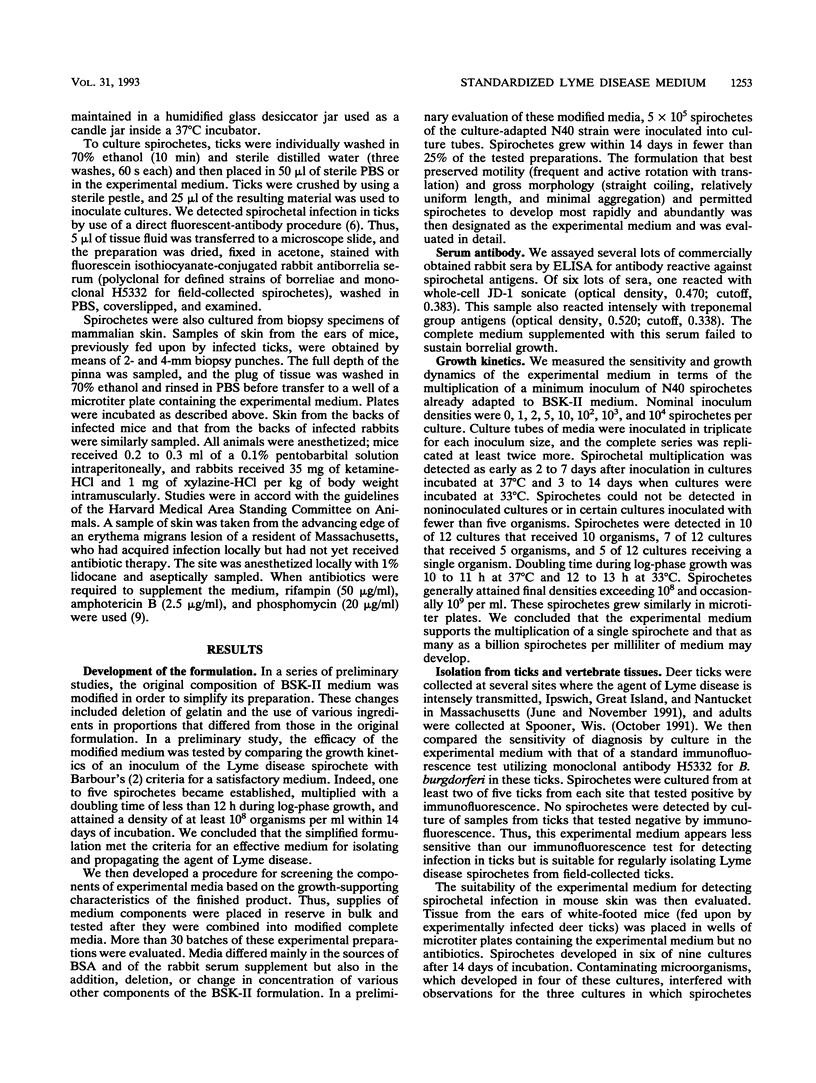
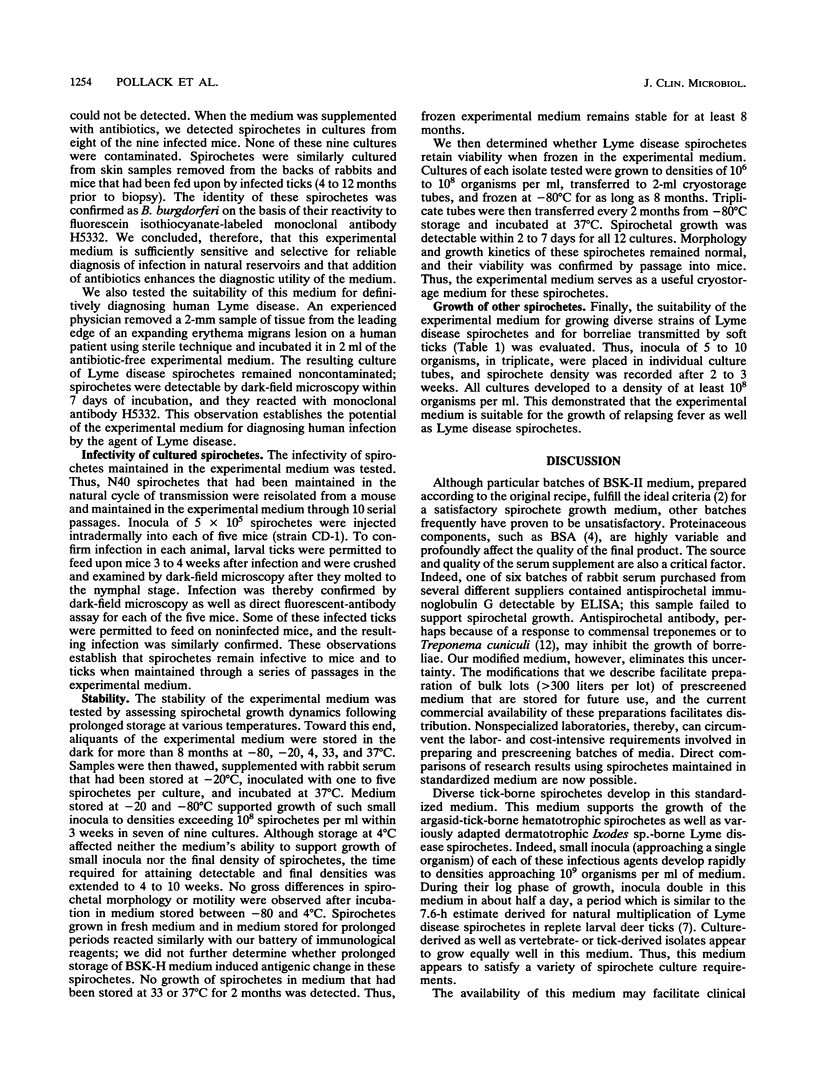
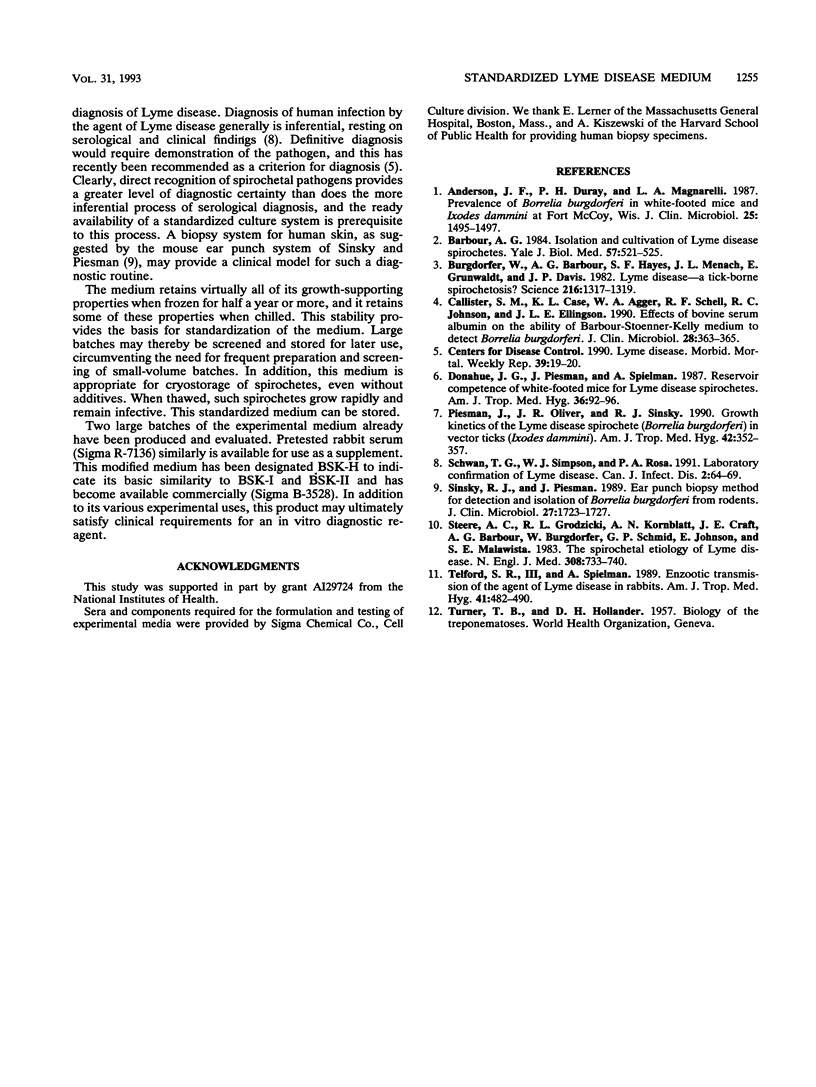
Selected References
These references are in PubMed. This may not be the complete list of references from this article.
- Anderson J. F., Duray P. H., Magnarelli L. A. Prevalence of Borrelia burgdorferi in white-footed mice and Ixodes dammini at Fort McCoy, Wis. J Clin Microbiol. 1987 Aug;25(8):1495–1497. doi: 10.1128/jcm.25.8.1495-1497.1987. [DOI] [PMC free article] [PubMed] [Google Scholar]
- Barbour A. G. Isolation and cultivation of Lyme disease spirochetes. Yale J Biol Med. 1984 Jul-Aug;57(4):521–525. [PMC free article] [PubMed] [Google Scholar]
- Burgdorfer W., Barbour A. G., Hayes S. F., Benach J. L., Grunwaldt E., Davis J. P. Lyme disease-a tick-borne spirochetosis? Science. 1982 Jun 18;216(4552):1317–1319. doi: 10.1126/science.7043737. [DOI] [PubMed] [Google Scholar]
- Callister S. M., Case K. L., Agger W. A., Schell R. F., Johnson R. C., Ellingson J. L. Effects of bovine serum albumin on the ability of Barbour-Stoenner-Kelly medium to detect Borrelia burgdorferi. J Clin Microbiol. 1990 Feb;28(2):363–365. doi: 10.1128/jcm.28.2.363-365.1990. [DOI] [PMC free article] [PubMed] [Google Scholar]
- Donahue J. G., Piesman J., Spielman A. Reservoir competence of white-footed mice for Lyme disease spirochetes. Am J Trop Med Hyg. 1987 Jan;36(1):92–96. doi: 10.4269/ajtmh.1987.36.92. [DOI] [PubMed] [Google Scholar]
- Piesman J., Oliver J. R., Sinsky R. J. Growth kinetics of the Lyme disease spirochete (Borrelia burgdorferi) in vector ticks (Ixodes dammini). Am J Trop Med Hyg. 1990 Apr;42(4):352–357. doi: 10.4269/ajtmh.1990.42.352. [DOI] [PubMed] [Google Scholar]
- Sinsky R. J., Piesman J. Ear punch biopsy method for detection and isolation of Borrelia burgdorferi from rodents. J Clin Microbiol. 1989 Aug;27(8):1723–1727. doi: 10.1128/jcm.27.8.1723-1727.1989. [DOI] [PMC free article] [PubMed] [Google Scholar]
- Steere A. C., Grodzicki R. L., Kornblatt A. N., Craft J. E., Barbour A. G., Burgdorfer W., Schmid G. P., Johnson E., Malawista S. E. The spirochetal etiology of Lyme disease. N Engl J Med. 1983 Mar 31;308(13):733–740. doi: 10.1056/NEJM198303313081301. [DOI] [PubMed] [Google Scholar]
- Telford S. R., 3rd, Spielman A. Enzootic transmission of the agent of Lyme disease in rabbits. Am J Trop Med Hyg. 1989 Oct;41(4):482–490. doi: 10.4269/ajtmh.1989.41.482. [DOI] [PubMed] [Google Scholar]


